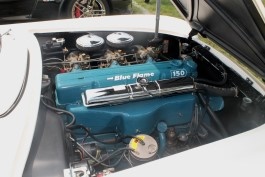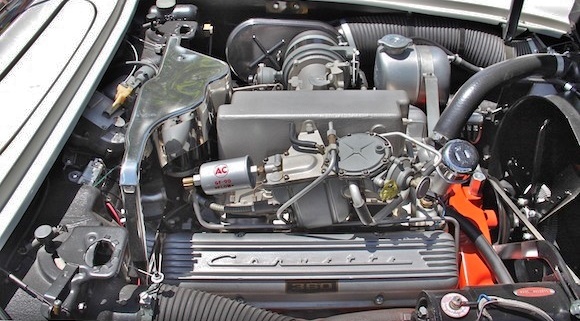C1 – First Generation (1953 – 1962)
 |
The first generation of Corvette was introduced late in 1953. Originally designed as a show car for the 1953 Motorama display at the New York Auto Show, it generated enough interest to convince GM executives to begin production of a version that could be sold to the public. First production was on June 30, 1953 and this date is often regarded as the official birthday of Corvette.
|
  |
|
 |
In 1956, a new body was introduced featuring a new "face" and side coves, the taillamp fins were also gone. An optional fuel injection system was made available in the middle of the 1957 model year. It was one of the first mass-produced engines in history to reach 1 bhp per cubic inch. Chevrolet's advertising agency promptly used a "one hp per cubic inch" slogan for advertising the new 283ci Small-Block engine. |
 |
|
 |
The 1958 Corvette received extensive body and interior redesign which included a longer front end with quad headlamps, 9 tooth grills (previously 13), bumper exiting exhaust tips, a new steering wheel, and a dashboard with all gauges mounted directly in front of the driver. 1958 was also the first year the Corvette saw factory installed seat belts. Exclusive to the 1958 model were hood louvers and twin chrome trunk spears. |
 |
In 1961, the rear of the Corvette was completely redesigned with the addition of a "ducktail" that had four round lights. The quad brake light design would remain a recognizable feature for all following model year Corvettes until it was changed in 2014. |
 |
In 1962, the Chevrolet 283ci was replaced by a larger 327ci. In standard form it produced 250hp. For an extra 12% over list price, the fuel-injected version produced 360 bhp, making it the fastest of the first generation. 1962 was also the last year for the wrap around windshield, solid rear axle, and convertible-only body style. The trunk lid and exposed headlamps also would not reappear again for many decades. |
Previous Page |